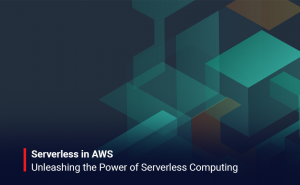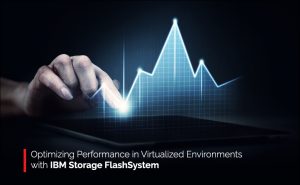- A multiprocessor Oracle database system uses background processes. Background processes are the processes running behind the scene and are meant to perform certain maintenance activities or to deal with abnormal conditions arising in the instance. Each background process is meant for a specific purpose and its role is well defined.
- Background processes consolidate functions that would otherwise be handled by multiple database programs running for each user process. Background processes asynchronously perform I/O and monitor other Oracle database processes to provide increased parallelism for better performance and reliability.
- A background process is defined as any process that is listed in V$PROCESS and has a non-null value in the pname column.
- Not all background processes are mandatory for an instance. Some are mandatory and some are optional. Mandatory background processes are DBWn, LGWR, CKPT, SMON, PMON, and RECO. All other processes are optional, will be invoked if that particular feature is activated.
- Oracle background processes are visible as separate operating system processes in Unix/Linux. In Windows, these run as separate threads within the same service. Any issues related to background processes should be monitored and analysed from the trace files generated and the alert log.
- Background processes are started automatically when the instance is started.
- To find out background processes from database:
SQL> select SID, PROGRAM from v$session where TYPE=’BACKGROUND’;
- To find out background processes from OS:
$ ps -ef | grep ora_|grep SID
Mandatory Background Processes in Oracle
- DBWn
- LGWR
- CKPT
- SMON
- PMON
- RECO
If any one of these 6 mandatory background processes is killed/not running, the instance will be aborted.
1) Database Writer (maximum 20) DBW0-DBW9,DBWa-DBWj
Whenever a log switch is occurring as redo log file changes from CURRENT stage to ACTIVE stage, oracle calls DBWn and synchronizes all the dirty blocks in database buffer cache to the respective datafiles, scattered or randomly.
DBWn will be invoked in following scenarios:
- When the dirty blocks in SGA reaches to a threshold value, oracle calls DBWn.
- When the database is shutting down with some dirty blocks in the SGA, then oracle calls DBWn.
- DBWn has a time out value (3 seconds by default) and it wakes up whether there are any dirty blocks or not.
- When a checkpoint is issued.
- When a server process cannot find a clean reusable buffer after scanning a threshold number of buffers.
- When a huge table wants to enter into SGA and oracle could not find enough free space where it decides to flush out LRU blocks and which happens to be dirty blocks. Before flushing out the dirty blocks, oracle calls DBWn.
- When Table Dropped or Truncated.
- When tablespace is going to OFFLINE/READ ONLY/BEGIN BACKUP.
2) Log Writer (maximum 1) LGWR
- LGWR writes redo data from redo log buffers to (online) redolog files, sequentially.
- Redolog file contains changes to any datafile. The content of the redolog file is file id, block id and new content.
- LGWR will be invoked more often than DBWn as log files are really small when compared to datafiles (KB vs GB). For every small update we don’t want to open huge gigabytes of datafiles, instead write to the log file.
- Redolog file has three stages CURRENT, ACTIVE, INACTIVE and this is a cyclic process. Newly created redolog file will be in UNUSED state.
LGWR will be invoked in following scenarios:
- LGWR is invoked whenever 1/3rd of the redo buffer is filled up.
- Whenever the log writer times out (3sec).
- Whenever 1MB of redolog buffer is filled (This means that there is no sense in making the redolog buffer more than 3MB).
- Shutting down the database.
- Whenever checkpoint event occurs.
- When a transaction is completed (either committed or rollbacked) then oracle calls the LGWR and synchronizes the log buffers to the redolog files and then only passes on the acknowledgement back to the user. Which means the transaction is not guaranteed although we said commit, unless we receive the acknowledgement. When a transaction is committed, a System Change Number (SCN) is generated and tagged to it. Log writer puts a commit record in the redolog buffer and writes it to disk immediately along with the transaction’s redo entries. Changes to actual data blocks are deferred until a convenient time (Fast-Commit mechanism).
- When DBWn signals the writing of redo records to disk. All redo records associated with changes in the block buffers must be written to disk first (The write-ahead protocol). While writing dirty buffers, if the DBWn process finds that some redo information has not been written, it signals the LGWR to write the information and waits until the control is returned.
3) Checkpoint (maximum 1) CKPT
Checkpoint is a background process which triggers the checkpoint event, to synchronize all database files with the checkpoint information. It ensures data consistency and faster database recovery in case of a crash.
When a checkpoint occurs it will invoke the DBWn and updates the SCN block of the all datafiles and the control file with the current SCN. This is done by LGWR. This SCN is called checkpoint SCN.
Checkpoint event can be occurred in following conditions:
- Whenever database buffer cache filled up.
- Whenever times out (3seconds until 9i, 1second from 10g).
- Log switch occurred.
- Whenever manual log switch is done.
SQL> ALTER SYSTEM SWITCH LOGFILE; - Manual checkpoint.
SQL> ALTER SYSTEM CHECKPOINT; - Graceful shutdown of the database.
- Whenever BEGIN BACKUP command is issued.
- When the time specified by the initialization parameter LOG_CHECKPOINT_TIMEOUT (in seconds), exists between the incremental checkpoint and the tail of the log.
- When the number of OS blocks specified by the initialization parameter LOG_CHECKPOINT_INTERVAL, exists between the incremental checkpoint and the tail of the log.
- The number of buffers specified by the initialization parameter FAST_START_IO_TARGET required to perform roll-forward is reached.
- Oracle 9ionwards, the time specified by the initialization parameter FAST_START_MTTR_TARGET (in seconds) is reached and specifies the time required for a crash recovery. The parameter FAST_START_MTTR_TARGET replaces LOG_CHECKPOINT_INTERVAL and FAST_START_IO_TARGET, but these parameters can still be used.
4) System Monitor (maximum 1) SMON :
- If the database is crashed (power failure) and next time when we restart the database SMON observes that last time the database was not shutdown gracefully. Hence it requires some recovery, which is known as INSTANCE CRASH RECOVERY. When performing the crash recovery before the database is completely open, if it finds any transaction committed but not found in the datafiles, will now be applied from redolog files to datafiles.
- If SMON observes some uncommitted transaction which has already updated the table in the datafile, is going to be treated as a in doubt transaction and will be rolled back with the help of before image available in rollback segments.
- SMON also cleans up temporary segments that are no longer in use.
- It also coalesces contiguous free extents in dictionary managed tablespaces that have PCTINCREASE set to a non-zero value.
- InRAC environment, the SMON process of one instance can perform instance recovery for other instances that have failed.
- SMON wakes up about every 5 minutes to perform housekeeping activities.
5) Process Monitor (maximum 1) PMON
- If a client has an open transaction which is no longer active (client session is closed) then PMON comes into the picture and that transaction becomes in doubt transaction which will be rolled back.
- PMON is responsible for performing recovery if a user process fails. It will rollback uncommitted transactions. If the old session locked any resources that will be unlocked by PMON.
- PMON is responsible for cleaning up the database buffer cache and freeing resources that were allocated to a process.
- PMON also registers information about the instance and dispatcher processes with Oracle (network) listener.
- PMON also checks the dispatcher & server processes and restarts them if they have failed.
- PMON wakes up every 3 seconds to perform housekeeping activities.
6) Recoverer (maximum 1) RECO [Mandatory from Oracle 10g]
This process is intended for recovery in distributed databases. The distributed transaction recovery process finds pending distributed transactions and resolves them. All in-doubt transactions are recovered by this process in the distributed database setup. RECO will connect to the remote database to resolve pending transactions.
Optional Background Processes In ORACLE
- Archiver (maximum 10) ARC0-ARC9 :
The ARCn process is responsible for writing the online redolog files to the mentioned archive log destination after a log switch has occurred. ARCn is present only if the database is running in archivelog mode and automatic archiving is enabled. The log writer process is responsible for starting multiple ARCn processes when the workload increases. Unless ARCn completes the copying of a redolog file, it is not released to log writer for overwriting.
- Coordinated Job Queue Processes(maximum 1000) CJQ0/Jnnn:
Job queue processes carry out batch processing. All scheduled jobs are executed by these processes. The initialization parameter JOB_QUEUE_PROCESSES specifies the maximum job processes that can be run concurrently. These processes will be useful in refreshing materialized views.
- CQJ0–
Job queue controller process wakes up periodically and checks the job log. If a job is due, it spawns Jnnnn processes to handle jobs.
- Dedicated Server
Dedicated server processes are used when MTS is not used. Each user process gets a dedicated connection to the database. These user processes also handle disk reads from database datafiles into the database block buffers.
- LISTENER
The LISTENER process listens for connection requests on a specified port and passes these requests to either a distributor process if MTS is configured, or to a dedicated process if MTS is not used. The LISTENER process is responsible for load balance and failover in case a RAC instance fails or is overloaded.
- CALLOUT Listener
Used by internal processes to make calls to externally stored procedures.
- Lock Monitor(maximum 1) LMON
Lock monitor manages global locks and resources. It handles the redistribution of instance locks whenever instances are started or shutdown. Lock monitor also recovers instance lock information prior to the instance recovery process. Lock monitor co-ordinates with the Process Monitor (PMON) to recover dead processes that hold instance locks.
- Lock Manager Daemon (maximum 10) LMDn:
LMDn processes manage instance locks that are used to share resources between instances. LMDn processes also handle deadlock detection and remote lock requests.
- Lock processes (maximum 10) LCK0- LCK9
The instance locks that are used to share resources between instances are held by the lock processes.
- Block Server Process (maximum 10) BSP0-BSP9
Block server Processes have to do with providing a consistent read image of a buffer that is requested by a process of another instance, in certain circumstances.
- Queue Monitor (maximum 10) QMN0-QMN9
This is the advanced queuing time manager process. QMNn monitors the message queues. QMN used to manage Oracle Streams Advanced Queuing.
- Event Monitor (maximum 1) EMN0/EMON
This process is also related to advanced queuing, and is meant for allowing a publish/subscribe style of messaging between applications.
- Dispatcher (maximum 1000) Dnnn
Intended for multi-threaded server (MTS) setups. Dispatcher processes listen to and receive requests from connected sessions and places them in the request queue for further processing. Dispatcher processes also pickup outgoing responses from the result queue and transmit them back to the clients. Dnnn are mediators between the client processes and the shared server processes.
- Shared Server Processes (maximum 1000) Snnn:
Intended for multi-threaded server (MTS) setups. These processes pickup requests from the call request queue, process them and then return the results to a result queue. These user processes also handle disk reads from database datafiles into the database block buffers.
- Parallel Execution/Query Slaves (maximum 1000) Pnnn
These processes are used for parallel processing. It can be used for parallel execution of SQL statements or recovery.
- Trace Writer (maximum 1) TRWR
Trace writer writes trace files from an Oracle internal tracing facility.
- Input/output Slaves (maximum 1000) Innn
These processes are used to simulate asynchronous I/O on platforms that do not support it. The initialization parameter DBWR_IO_SLAVES is set for this purpose.
- Data Guard Monitor (maximum 1) DMON
The Data Guard broker process. DMON is started when Data Guard is started. This is broker controller process is the main broker process and is responsible for coordinating all broker actions as well as maintaining the broker configuration files. This process is enabled/disabled with the DG_BROKER_START parameter.
- Data Guard Broker Resource ManagerRSM0
The RSM process is responsible for handling any SQL commands used by the broker that need to be executed on one of the databases in the configuration.
- Data Guard Broker Instance Slave ProcessINSV
Performs Data Guard broker communication among instances in an Oracle RAC environment.
- Data Guard Broker Fast Start Failover Pinger ProcessFSFP
Maintains fast-start failover state between the primary and target standby databases. FSFP is created when fast-start failover is enabled.
- LGWR Network Server processLNS:
In Data Guard, LNS process performs actual network I/O and waits for each network I/O to complete. Each LNS has a user configurable buffer that is used to accept outbound redo data from the LGWR process. The NET_TIMEOUT attribute is used only when the LGWR process transmits redo data using a LGWR Network Server (LNS) process.
- Managed Recovery ProcessMRP
In Data Guard environment, this managed recovery process will apply archived redo logs to the standby database.
- Remote File Server processRFS
The remote file server process, in Data Guard environment, on the standby database receives archived redo logs from the primary database.
- Logical Standby ProcessLSP
The logical standby process is the coordinator process for a set of processes that concurrently read, prepare, build, analyse, and apply completed SQL transactions from the archived redo logs. The LSP also maintains metadata in the database. The RFS process communicates with the logical standby process (LSP) to coordinate and record which files arrived.
- Wakeup Monitor Process (maximum 1) WMON
This process was available in older versions of Oracle to alarm other processes that are suspended while waiting for an event to occur. This process is obsolete and has been removed.
- Recovery Writer (maximum 1) RVWR
This is responsible for writing flashback logs (to FRA).
- Fetch Archive Log (FAL) Server
Services requests for archive redo logs from FAL clients running on multiple standby databases. Multiple FAL servers can be run on a primary database, one for each FAL request.
- Fetch Archive Log (FAL) Client
Pulls archived redo log files from the primary site. Initiates transfer of archived redo logs when it detects a gap sequence.
- Data PumpMaster Process DMnn
Creates and deletes the master table at the time of export and import. Master table contains the job state and object information. Coordinates the Data Pump job tasks performed by Data Pump worker processes and handles client interactions. The Data Pump master (control) process is started during job creation and coordinates all tasks performed by the Data Pump job. It handles all client interactions and communication, establishes all job contexts, and coordinates all worker process activities on behalf of the job. Creates the Worker Process.
- Data Pump Worker ProcessDWnn
It performs the actual heavy-duty work of loading and unloading of data. It maintains the information in master table. The Data Pump worker process is responsible for performing tasks that are assigned by the Data Pump master process, such as the loading and unloading of metadata and data.
- Shadow Process
When client logs in to an Oracle Server the database creates and Oracle process to service Data Pump API.
- Client Process
The client process calls the Data pump API.
- Memory Manager(maximum 1) MMAN
MMAN dynamically adjust the sizes of the SGA components like buffer cache, large pool, shared pool and java pool and serves as SGA memory broker. It is a new process added to Oracle 10g as part of automatic shared memory management.
- Memory Monitor(maximum 1) MMON
MMON monitors SGA and performs various manageability related background tasks. MMON, the Oracle 10g background process, used to collect statistics for the Automatic Workload Repository (AWR).
- Memory Monitor Light(maximum 1) MMNL
New background process in Oracle 10g. This process performs frequent and lightweight manageability-related tasks, such as session history capture and metrics computation. This process will flush the ASH buffer to AWR tables when the buffer is full or a snapshot is taken.
- Change Tracking Writer (maximum 1) CTWR
CTWR will be useful in RMAN. Optimized incremental backups using block change tracking (faster incremental backups) using a file (named block change tracking file). CTWR (Change Tracking Writer) is the background process responsible for tracking the blocks.
- File Monitor (FMON)
The database communicates with the mapping libraries provided by storage vendors through an external non-Oracle Database process that is spawned by a background process called FMON. FMON is responsible for managing the mapping information. When you specify the FILE_MAPPING initialization parameter for mapping datafiles to physical devices on a storage subsystem, then the FMON process is spawned.






